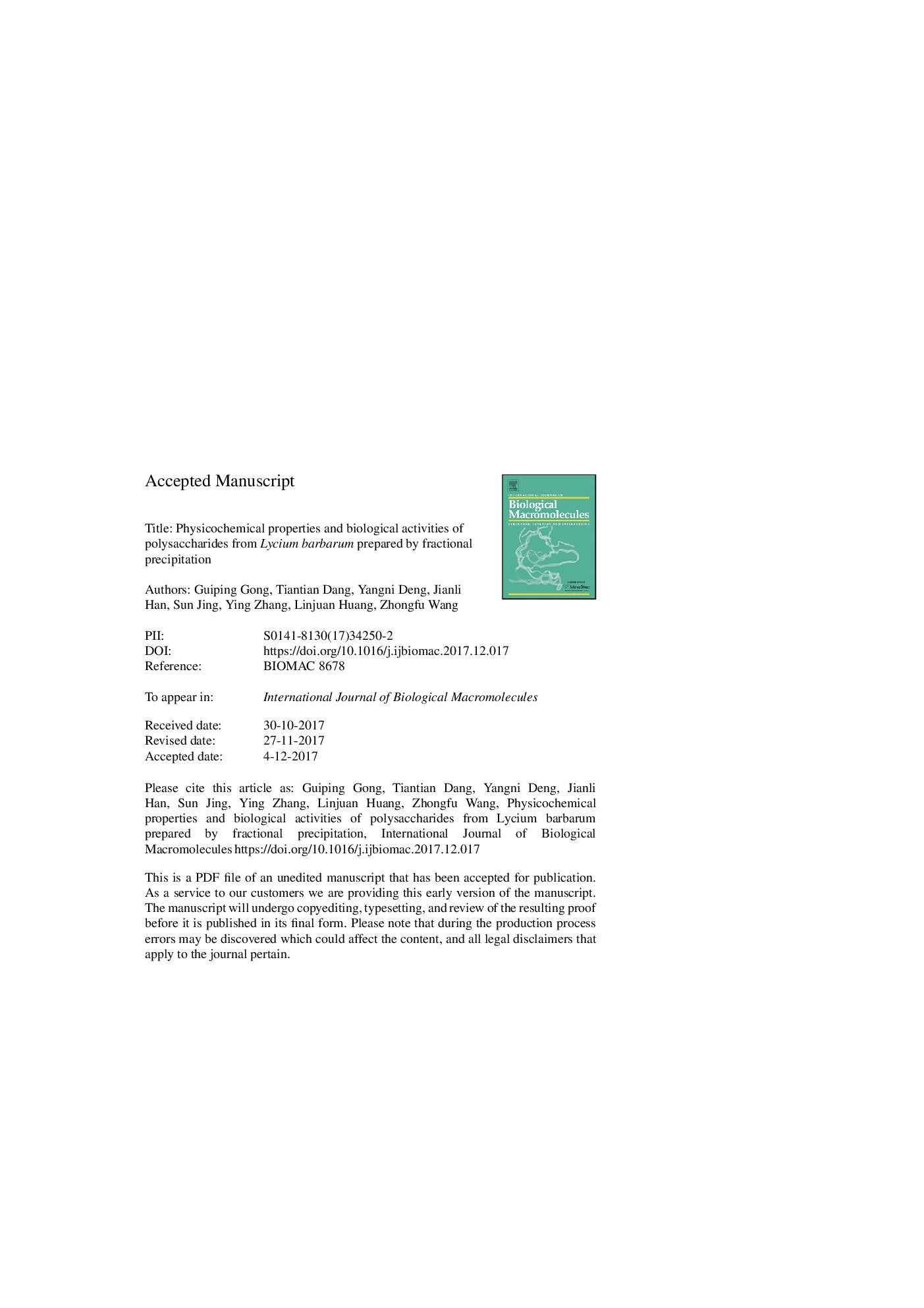| Article ID | Journal | Published Year | Pages | File Type |
|---|---|---|---|---|
| 8328408 | International Journal of Biological Macromolecules | 2018 | 28 Pages |
Abstract
Traditional separation and purification process of Lycium barbarum polysaccharides (LBP) includes water extraction, alcohol precipitation, deproteinization and ion-exchange column chromatography, which is complicated and time-consuming. In our study, retentate LBP-I and dialysate LBP-O were obtained from LBP by water extraction, alcohol precipitation and deproteinization. LBP-I was separated by fractional precipitation and three fractions (LBP-I-1, LBP-I-2 and LBP-I-3) were obtained. The three fractions were further purified by gel permeation chromatography to LBGP-I-1, LBGP-I-2 and LBGP-I-3 with yields of 0.05%, 0.03%, and 0.19%, respectively, which are higher than yields by traditional method. The physicochemical properties, biological activities of LBGP-I-1, LBGP-I-2 and LBGP-I-3 were investigated. The results indicated that LBGP-I-1 (3.19â¯Ãâ¯104â¯Da) consists of arabinose (21.95%), glucose (51.22%) and galactose (17.07%); LBGP-I-2 (2.92â¯Ãâ¯104â¯Da) mainly consists of arabinose (19.35%), glucose (32.26%) and galactose (35.48%); LBGP-I-3 (9.12â¯Ãâ¯104â¯Da) mainly consists of arabinose (48.15%) and galactose (44.44%). LBGP-I-1 and LBGP-I-2 were different from the components purified by traditional method. LBGP-I-3 could most significantly enhance macrophages NO, phagocytic capacity, and acid phosphatase. LBP-O exhibits the strongest anti-oxidant activities in vitro. These results provided a reference for applications of Lycium barbarum polysaccharides which would benefit the development of industry and agriculture.
Related Topics
Life Sciences
Biochemistry, Genetics and Molecular Biology
Biochemistry
Authors
Guiping Gong, Tiantian Dang, Yangni Deng, Jianli Han, Zihua Zou, Sun Jing, Ying Zhang, Qian Liu, Linjuan Huang, Zhongfu Wang,
